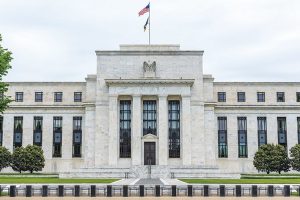Jonathan Levin
When it comes to communicating its outlook for monetary policy, the Federal Reserve is famous for using overly vague language that can be interpreted any number of ways. The latest example came last week in the central bank’s statement explaining its decision to again raise interest rates by 0.75 percentage point. And if you can decipher the meaning of this phrase, you may just be able to figure out what the Fed’s rate-setting committee will do in coming months. But don’t get too excited, because you probably can’t.
The phrase is sufficiently restrictive, and it appears in the following line in the Federal Open Market Committee’s statement Wednesday, some of the only new language in the communique.
The Committee anticipates that ongoing increases in the target range will be appropriate in order to attain a stance of monetary policy that is sufficiently restrictive to return inflation to 2 percent over time.
That sentence, found in paragraph 3 of the statement, is a perfect example of “Fed Speak’s†functional purpose in the world of central banking. In short, it exists to provide something that looks and feels like specific guidance, but is vague enough not to tie policymakers to a specific reaction function. This has been the case ever since the Fed decided during the era of Alan Greenspan to become more transparent. But too often the Fed manages to confuse rather than clarify with such phrases. Who could forget when the Ben S. Bernanke Fed promised to keep monetary policy accommodative for a considerable time? As such, economists and market participants are left to debate semantics instead of fundamentals. After all, one economist’s sufficiently restrictive may be another’s insufficiently restrictive. And how much time is a “considerable time?†With that in mind, let’s have a go at trying to understand just what the Fed means by sufficiently restrictive.
First, consider what sufficiently restrictive is not. It’s not neutral, the theoretical level of rates at which policy is thought to exert neither upward nor downward pressure on the economy. As recently as the March and May FOMC meetings, Chair Jerome Powell still thought that a neutral federal funds rate might be appropriate 1 — at least, he hadn’t settled on the notion that restrictive was absolutely necessary — which seemed to reflect a veiled but lingering hope that inflation would resolve itself to a large degree. You might have thought that Powell and his colleagues had abandoned the notion that inflation was transitory in 2021, but they had really just abandoned the word.
As the thinking went, the Fed just needed to refrain from stimulating the economy and making inflation any worse while strained supply chains healed and other disinflationary forces kicked in. By June 2 , Powell had stopped insinuating that neutral might be enough and was starting to emphasize that policy needed to be modestly or moderately restrictive. At that stage, inflation looked like it had gotten into the bones of the economy. Then, in an August speech 3 at the Fed’s retreat in Jackson Hole, Wyoming, Powell switched over to sufficiently restrictive. The subtraction of moderately seemed to be more significant than the addition of sufficiently, a particularly vapid word in the Fedspeak lexicon.
One simplistic way to think about what these terms mean is to compare them to how FOMC members thought at the time about where real, or inflation adjusted, rates needed to go. In March — when the Fed was causally strolling toward neutral — the committee thought it could get away with a real fed funds rate that went just barely above zero in 2023 and reached about 0.5% in 2024. By September, policymakers seemed to think that the real fed funds rate needed to get to 1.5% or 1.6% and fairly soon. (The real fed funds rate is currently around negative 1%, based charitably on the core personal consumption expenditures deflator.)
Could sufficiently restrictive now be even higher in real terms than it was just this September? Maybe. As Powell said in his press conference, the committee’s concept of the nominal terminal fed funds rate has risen since the September Summary of Economic Projections was issued, but it’s conceivable that much of that simply reflects higher inflation projections, not necessarily a changing view of restrictive.
All of this is highly imprecise. As Powell noted during his press conference Wednesday, he will also be monitoring financial and economic conditions to assess whether rates are restrictive. Certainly, if the real economy and reported inflation remain buoyant, that would be a sign to the Fed that it’s forecasts are wrong, its notion of restrictive may be misinformed or both. Inflation measured by core PCE — the Fed’s preferred gauge — has been relatively sticky above 4%, and if that doesn’t come down to a meaningful degree, then policy isn’t working.
Likewise, the Fed will want to see evidence of underlying wage growth slowing from around 5% to ensure that higher labor costs won’t perpetuate the cycle of companies raising prices. Assuming moribund productivity growth returns to a more normal level of around 1.5%, you’d need wage growth to slow to something like 3.5% to restore an environment of low and stable inflation.
—Bloomberg
 The Gulf Time Newspaper One of the finest business newspapers in the UAE brought to you by our professional writers and editors.
The Gulf Time Newspaper One of the finest business newspapers in the UAE brought to you by our professional writers and editors.
